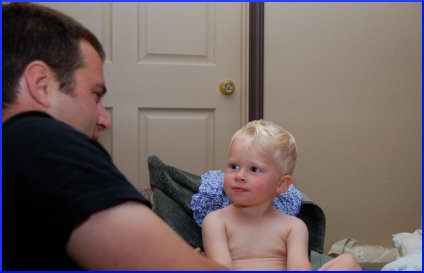
Childhood Obesity News has spoken before of the uses made of the “Early Childhood Longitudinal Study, Birth Cohort” (ECLS-B), a huge study of 14,000 children in which information was collected when they were 9 months old and 4 years old, and then again a year or so later, depending on when they finished kindergarten.
This process is described by the National Collaborative on Childhood Obesity Research (NCCOR) on its website about surveillance systems, which sounds a bit ominous, but just basically pertains to the 101 research projects that are available for academics who want to do metastudies.
For each one, the resource gives details of the particular study’s “noteworthy characteristics.” For instance, here are the attractive features of the ECLS-B:
- Provides information on prenatal and post-birth health status, prenatal health care.
- Measured children’s height/length, weight, and middle upper arm circumference.
- Includes data on breastfeeding and nutrition practices for very young children.
- Includes measures of physical activity and sedentary behaviors.
- Includes information on participation in food assistance programs.
- Provides geocode information to the zip code level.
Getting back to mothers, researchers from Rice University and the University of Houston used information from the ECLS-B database to determine that mothers should also be wives, if they want their children to not become obese. Their study is called “Family Structure and Obesity Among U.S. Children.” Here is a shortened version of how it breaks down, according to what kind of family structure a child lives in:
- traditional two-parent married household: 17% obesity rate
- cohabitating parents: 31%
- children living with an adult relative: 29%
- single mother: 23%
- cohabitating stepparent family: 23%
Strangely (at first glance), although the obesity rate for children living with their single mother is 23%, for those living with a single father or a father who has legally remarried, the obesity rate is only 15%. This is explained by study co-author Rachel Kimbro, Ph.D.:
Previous research has shown that single-father households tend to have more socio-economic resources than single-mother households, and since socio-economic status is the single greatest predictor of health, it serves to explain why children in single-father households may be less likely to be obese.
The post-divorce economic difference between men and women is not really shocking news. Sometimes the result can be very unfair. Often, divorce leaves the father in better shape, financially, than the mother. But sometimes the advantage goes to a woman whose diligent lawyer is able to enforce large alimony and child-support payments. It can go either way. But Kimbro also mentioned a seeming truth that is much more mysterious:
For reasons we cannot fully measure, there appears to be something about people who marry and have a child that is fundamentally different than the other groups, and these factors are also linked to children’s weight.
Single mothers, whether divorced or never married, are all too aware that their kids would, in general, be better off with an onsite father figure. Single mothers may, in fact, get a little tired of hearing about how much better their kids would fare with a male breadwinner in their lives. They know all about it, and in many cases, they themselves would like nothing better than to be married to a nice man. They have their own pain and loneliness to deal with, and if an outsider offers the bright idea, “Hey, maybe if you were married, your kid wouldn’t be fat,” that just rubs salt in the wound.
Mothers already know their kids need fathers. What they don’t know is how to make it happen, and nobody knows how to bring about the sweeping societal changes that would be necessary for the preservation of marriages. Meanwhile, the same research team has already started examining the “household-level processes” found in different family structures, that may account for why some kids gain weight and others don’t.
Your responses and feedback are welcome!
Source: “Early Childhood Longitudinal Study, Birth Cohort (ECLS-B),” NCCOR.org, 05/24/13
Source: “Children of married parents less likely to be obese,” MedicalXpress, 05/22/13
Image by Cheryl Reed.

 FAQs and Media Requests:
FAQs and Media Requests: 











